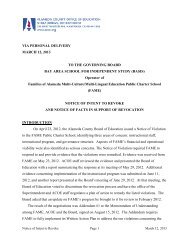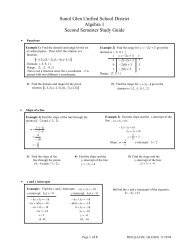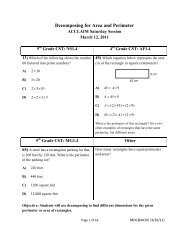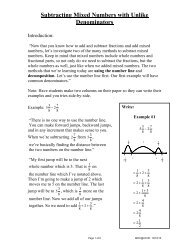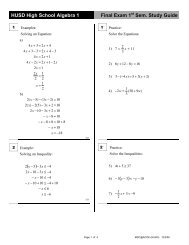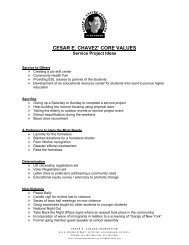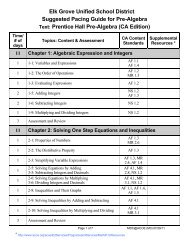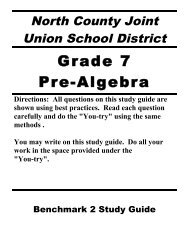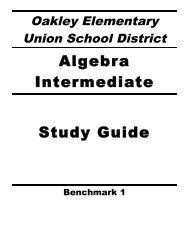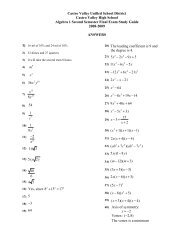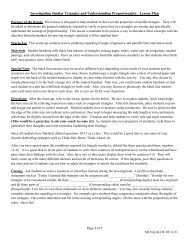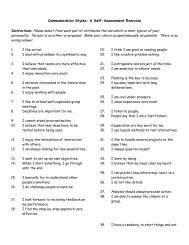Foundational Literacy Skills for EL- English Learners (CA Dept of ...
Foundational Literacy Skills for EL- English Learners (CA Dept of ...
Foundational Literacy Skills for EL- English Learners (CA Dept of ...
You also want an ePaper? Increase the reach of your titles
YUMPU automatically turns print PDFs into web optimized ePapers that Google loves.
Student Language &<br />
<strong>Literacy</strong> Characteristics:<br />
Considerations <strong>for</strong> <strong>Literacy</strong><br />
<strong>Foundational</strong> <strong>Skills</strong> Instruction<br />
<strong>CA</strong> Common Core Reading Standards:<br />
<strong>Foundational</strong> <strong>Skills</strong><br />
Oral <strong>Skills</strong><br />
No or little spoken <strong>English</strong> pr<strong>of</strong>iciency<br />
Spoken <strong>English</strong> pr<strong>of</strong>iciency<br />
Students will need instruction in recognizing and<br />
distinguishing the sounds <strong>of</strong> <strong>English</strong> as compared or<br />
contrasted with sounds in their native language (e.g.,<br />
vowels, consonants, consonant blends, syllable<br />
structures).<br />
Students can apply their knowledge <strong>of</strong> the <strong>English</strong><br />
sound system to foundational literacy learning.<br />
Phonological Awareness<br />
2. Demonstrate understanding <strong>of</strong> spoken words,<br />
syllables, and sounds (phonemes).<br />
RF.K.2<br />
RF.1.2<br />
Review <strong>of</strong> Phonological Awareness skills as needed<br />
Print <strong>Skills</strong><br />
No or little native language literacy<br />
<strong>Foundational</strong> literacy pr<strong>of</strong>iciency in a<br />
language not using the Latin alphabet<br />
(e.g., Arabic, Chinese, Korean, Russian)<br />
Students will need to learn print concepts.<br />
Students will be familiar with print concepts<br />
generally, and will need to learn the Latin alphabet<br />
<strong>for</strong> <strong>English</strong>, comparing and contrasting with their<br />
native language writing system (e.g., direction <strong>of</strong><br />
print, symbols representing whole words, syllables or<br />
phonemes) and native language vocabulary (e.g.,<br />
cognates) and sentence structure (e.g., SVO vs. SOV<br />
word order).<br />
Print Concepts<br />
1. Demonstrate understanding <strong>of</strong> the organization<br />
and basic features <strong>of</strong> print.<br />
RF.K.1<br />
RF.1.1<br />
Phonics and Word Recognition<br />
3. Know and apply grade‐level phonics and word<br />
analysis skills in decoding words.<br />
RF.K.3<br />
RF.1.3<br />
RF.2.3<br />
RF.3.3<br />
RF.4.3<br />
RF.5.3<br />
Fluency<br />
4. Read with sufficient accuracy and fluency to<br />
support comprehension.<br />
RF.5.4 4 (at 6–12 grade level)<br />
<strong>Foundational</strong> literacy pr<strong>of</strong>iciency in a<br />
language using the Latin alphabet (e.g.,<br />
Spanish)<br />
Students can apply their knowledge <strong>of</strong> print concepts<br />
and phonics and word recognition to the <strong>English</strong><br />
writing system, comparing and contrasting with their<br />
native language alphabet (e.g., letters that are the<br />
same or different, or represent the same or different<br />
sounds) and native language vocabulary (e.g.,<br />
Review <strong>of</strong> Phonics and Word Recognition skills as<br />
needed<br />
16



